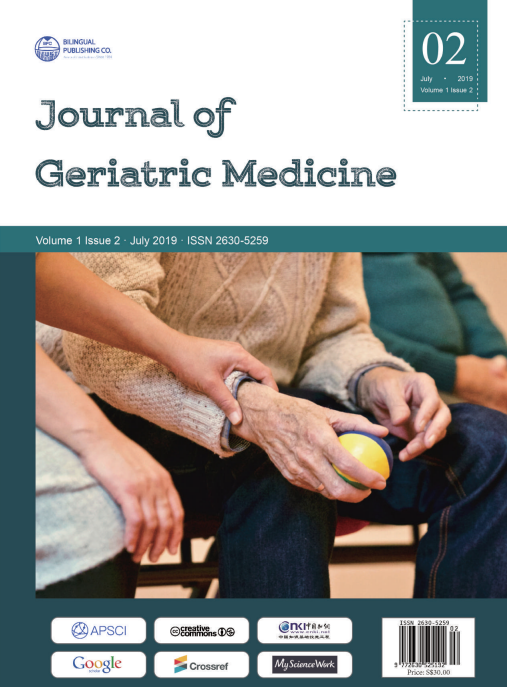 Correction & Withdrawal Policies
Correction & Withdrawal Policies
The Predictive Potential of the Kinetic Model of Aging of Living Systems in Demography
DOI:
https://doi.org/10.30564/jgm.v1i2.1644Abstract
An original mathematical model, previously tested by the authors on other non-demographic objects, is proposed for describing and forecasting demographic systems — the population of the countries of the World using the examples of the USA, China and Russia, as well as the number of mice in the “mouse paradise” experiment of the American scientist John Calhoun. The proposed approach allows us to describe the stages and features of this dynamics: population growth in the USA, growth and possible decrease in the population in China, loss of a part of the population of the Russian Empire and the USSR due to two world wars and the collapse of the USSR, biological degradation of the “mouse paradise” up to its complete extinction. The use of the kinetic model of aging of various types of living systems to predict the development of the number of demographic systems is based on the assumptions that the aging and development processes are related to each other and have the same statistical regularity, reflecting the fractal principle of Nature - the unity of structure and function. The results obtained suggest that a person, a population of the World, humanity and other biological species develop and simultaneously age like each other under the conditions of the always existing syndrome of general adaptation (stress) and according to the same pattern corresponding to the mathematical model proposed here.
Keywords:
Model;Kinetic Theory;Dynamics;Population;Living System;General adaptation syndrome;Stress.References
[1] A. V. Anikin, Malthus, Malthusianism. Youth of science: Life and ideas of thinkers – economists before Marx, 2nd Ed. Politizdat, Moscow, 1975: 266-274 (in Russian).
[2] P. F. Verhulst. Recherches Mathématiques sur La Loi D’Accroissement de la Population, Mathematical Researches into the Law of Population Growth Increase, 1845, 18(1): 1-45.
[3] H. von Foerester, P. Mora, L. Amiot. Doomsday:Friday, 13 November, A. D. 2026. At this date human population will approach infinity if it grows as it has grown in the last two millennia, Science, 1960, 132:1291-1295.
[4] S. Hoerner. Population Explosion and Interstellar Expansion, Journal of the British Interplanetary Society,1975, 28: 691-712.
[5] M. Кrеmеr. Population Growth and Technological Change: One Million B. C. to 1990, The Quarterly Journal of Economics, 1993, 108: 681-716.
[6] S. Kapitsa. Model of Earth’s population growth and economic progress of mankind. Economic issues, ,2000, 12. (in Russian)
[7] S. Kapitsa. How many people lived, lives and will live on the Earth. Nauka, Moscow, 1999 (in Russian).
[8] Yu. N. Orlov. Methods of mathematical demography: state-of-the-art, problems, exact results, M.V. Keldysh Institute of Applied Mathematics RAS,MIPT, sector of kinetic equations, department of higher mathematics, KIT, Kotovsk, 2015 (in Russian).
[9] O. V. Staroverov. The basics of mathematical demography, Nauka, Moscow, 1997 (in Russian).
[10] UN Population Division World Population Prospects The 2010 Revision: http://www.unpopulation.org
[11] Statistical reference book of the USSR for year 1928. https://istmat.info/node/20228 (in Russian).
[12] CIA. The World Factbook. USA. People and Society. https://www.cia.gov/libarary/publications/the-worldfactbook/geos/us.html
[13] USA Quick Facts from the US Census Bureau. https://quickfacts.census.gov/qfd/states/00000.html
[14] United Nations, Department of Economic and Social Affairs, Population Division, 2015.
[15] World Population Prospects. The 2015 Revision,DVD Edition. File POP/8-1.
[16] E. M. Scherbakova. Aging world population, Demoscope Weekly, 2015, 667-668. http://demoskope.ru/weekly/2015/0667/barometer667.pdf (in Russian)
[17] John Calhoun. Death Squared: The Explosive Growth and Demise of a Mouse Population, Proc. Roy. Soc.Mev., 1973, 66(2): 80-88.
[18] A. A. Viktorov, V. A. Kholodnov, A. V. Anofriev. Kinetic model of aging biological species in natural habitat, Advances in Gerontology, 2019, 9(3): 177-183.
[19] A. A. Viktorov and V. A. Kholodnov. Kinetic Theory for Aging of Living Systems, Advances in Gerontology, 2013, 3(4): 261-267.
[20] A. A. Viktorov, V. A. Kholodnov, V. D. Gladkikh and A. V. Alekhnovich. Influence of Environment on Aging of Living Systems: A Mathematical Model,Advances in Gerontology, 2013, 3(4): 255-260.
[21] G. Selye. Stress without distress, Progress Publisher,Moscow, 1982 (in Russian).
[22] A. A. Viktorov, V. D. Gladkikh, A. I. Ksenofontov,E. E. Morozova. Forecasting Environmental Health Risks Based on the Kinetic Theory of Aging of Living Systems, Advances in Gerontology, 2015, 5(3):141-146.
[23] A. A. Viktorov, A. I. Ksenofontov, E. E. Morozova. Environmental Risks to Public Health, National Research Nuclear University MEPhI Publishing, Moscow, 2014 (in Russian).
[24] China in Figures. Population. Total fertility rate. https://www.chinalist.ru/facts/index.php_param=368p_lang=0 (in Russian).
[25] S. A. Nefedov. On the demographic figures in the history of China (XI-XIX Centuries) https://book.uraic.ru/elib/authors/NEFEDOV/Science/China/China1.html (in Russian).
[26] Contemporary Demographic Policy: Russia and Foreign Experience, Analytical Bulletin of the Federation Council of the Federal Assembly of the Russian Federation, 2007, 25. (in Russian)
[27] El Khoury, L.Y., Gorrie-Stone, T., Smart, M. etal. Systematic underestimation of the epigenetic clock and age acceleration in older subjects. Genome Biol., 2019, 20(283). DOI:https://doi.org/10.1186/s13059-019-1810-4
[28] A. A. Viktorov, V. D. Gladkikh, E. E. Morozova. Aging of Dogs and Drosophila as Described Based on the Kinetic Theory, Advances in Gerontology, 2017,7(3): 177-183.
Downloads
How to Cite
Issue
Article Type
License
Copyright © 2020 Alexander Alexandrovich Victorov, Viacheslav Alexandrovich Kholodnov

This is an open access article under the Creative Commons Attribution-NonCommercial 4.0 International (CC BY-NC 4.0) License.




 Alexander Alexandrovich Victorov
Alexander Alexandrovich Victorov





